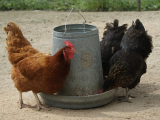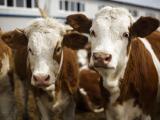Provincial and local officials recently shared more information about recent H7N9 avian flu cases in Tibet and Beijing, two locations far from the epicenter of recent cases.
China is in the midst of by far its largest H7N9 wave, with cases last week passing the 600 mark. Illnesses showed an unusual spike in December and peaked during January and February. Though the number of new cases has declined over the past few weeks, the country continues to report a steady stream of weekly cases from a wide area.
Though no major clinical changes in humans have been seen so far during the unprecedented surge, illnesses have been reported from a broader geographic range, including Tibet, also called Xizang autonomous region, and Beijing.
Cases from the two locations were already noted in the latest reports from Hong Kong's Centre for Health Protection, which receives its information from mainland authorities. However, the local governments fleshed out more details in official statements translated and posted by Avian Flu Diary (AFD), an infectious disease news blog.
Poultry workers at the same market
Tibet had recently reported its first-ever H7N9 case, in a poultry seller from Sichuan province who had been working with live poultry in Tibet since February and became ill in early April.
A few days ago, Tibet—located in western China—reported two more cases, followed by a statement from Tibet officials that two more poultry sellers from the same market in Lhasa, the province's capital, became ill with flulike symptoms at about the same time as the first case-patient. After the patients initially tested negative when they were hospitalized, retesting a week later was positive for H7N9.
The government said all three patients shared common exposure to the H7N9 virus.
In Beijing, common exposure
In the past 2 weeks, Beijing in northern China had reported three new H7N9 cases, putting its fifth-wave total at six. The illnesses reported earlier this year were imported from Hebei, Liaoning, and Shandong provinces, and it wasn't clear if the new cases were imported or locally acquired.
In a statement today, the Beijing Center for Disease Control said seven H7N9 cases have now been confirmed this season, and three were local cases involving people who had exposure to live poultry, a known risk factor for the disease.
The group includes a two-person cluster, and both had a common exposure history. One patient died and the other is hospitalized in stable condition, the statement said.
China has now reported at least 613 cases during the fifth wave, at least 179 of them fatal.
See also:
Apr 17 AFD post on recent H7N9 cases in Tibet
Apr 17 AFD post on recent H7N9 cases in Beijing






















